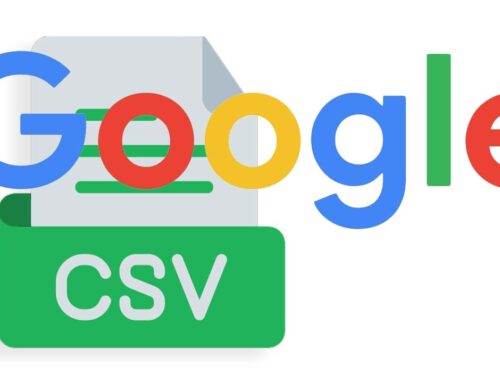The landscape of search engine optimization (SEO) is evolving. With the growth and intricacies of Google’s algorithms, SEO professionals and webmasters continuously need to adapt to stay ahead. One such development in recent years is the introduction of the concept of ‘Salience’ in understanding how Google perceives the relevance of content. Salience, which fundamentally pertains to the prominence or importance of a topic within a text, plays a significant role in the optimization game. By delving deep into this topic, readers can discover how Google’s Salience Score can be leveraged for effective SEO optimization. This article sheds light on what the Salience Score is, why it matters, and how you can incorporate it into your SEO strategies to climb the search engine ranks.
How to Leverage Google’s Salience Score for SEO Optimization
Table of Contents
- What is Salience Score?
- Why Salience Matters for SEO
- How to Incorporate Salience into Your SEO Strategy
- Frequently Asked Questions
- Final Thoughts
- Sources
What is Salience Score?

Understanding the Salience Score is paramount for SEO experts and content creators aiming to enhance their content’s relevance in Google’s eyes. As part of Google’s Natural Language Processing (NLP) algorithms, this metric dives deep into the fabric of content, illuminating which entities hold prominence. But what exactly is the Salience Score? Why did Google introduce it? And how is it calculated? This in-depth exploration will answer all these questions and more.
Definition of Salience Score
The world of Natural Language Processing (NLP) brings with it complex terms and metrics, one of the most pivotal being the “Salience Score.” But, what exactly does this term mean in the broader context of content analysis and SEO? Here, we unravel this concept, breaking it down to its core components for a deeper understanding.
Conceptual Foundations
At its core, the term ‘salience’ derives from the Latin word “salire,” meaning “to leap.” In linguistic and cognitive science, it broadly refers to the quality of being particularly noticeable or important. Essentially, salience determines what stands out in a text or discourse.
Salience Score in Google’s NLP
When applied to Google’s NLP algorithms, the Salience Score represents a numerical value assigned to an entity (which can be a topic, keyword, phrase, or even an idea) reflecting its prominence or significance within a given document or piece of content.
Quantitative Measure, Qualitative Insights
The beauty of the Salience Score lies in its ability to provide a quantitative measure (a number) that offers qualitative insights. For instance, if an article mentions “climate change” frequently and in key sections, like the title or headings, and in conjunction with other relevant terms, it’s likely that “climate change” will have a high Salience Score for that article. This numerical representation indicates that “climate change” is a principal topic of the content.
Not Just About Frequency
A common misconception is that salience is solely about frequency – how many times an entity appears in the text. While frequency plays a role, salience is more nuanced. It’s possible for an entity to appear just a few times in a document but have a high Salience Score because of its contextual importance. Similarly, an entity mentioned frequently might not necessarily have a high salience if it’s deemed contextually peripheral.
Importance in the SEO Landscape
From an SEO perspective, understanding the Salience Score is crucial. It offers insights into what Google’s algorithms perceive as the most important entities within your content. In an era where search engines strive to understand content much like humans do, optimizing for salience ensures that the core topics of your content are recognized, understood, and deemed valuable by Google.
The Salience Score is a dynamic metric that dives deep into the fabric of content, offering invaluable insights into the topics and entities that truly resonate within a piece of information. It’s a bridge between quantitative analysis and qualitative understanding, making it an indispensable tool in the realm of modern SEO.
The Origin of Salience Score in Google’s Algorithm
As the digital age continues its relentless evolution, the tools and metrics used to navigate it must adapt accordingly. One such adaptation by Google, aimed at refining content understanding and relevance, is the introduction of the Salience Score. This section delves into the genesis of this metric, its incorporation into Google’s complex algorithms, and the broader implications for the world of SEO and content creation.
Google’s Quest for Deeper Content Understanding
From its inception, Google’s primary aim was to organize the world’s information and make it universally accessible and useful. However, the initial algorithms largely relied on keyword density, metadata, and backlinks. This was a fairly rudimentary understanding of content and often led to issues like keyword stuffing. As the web grew, the diversity of content and the sophistication of user queries demanded a deeper, more nuanced comprehension of content.
The Birth of Salience in NLP
Natural Language Processing (NLP), a subfield of artificial intelligence, strives to help machines read and understand human language. As NLP technologies advanced, concepts like sentiment analysis, entity recognition, and salience emerged. Salience, in particular, allowed machines to discern the importance of specific entities in a text, moving beyond mere keyword presence to genuine content relevance.
Integrating Salience into Google’s Algorithm
Recognizing the potential of this NLP advancement, Google began integrating salience-based methodologies into its search algorithms. This was part of a larger move towards semantic search – understanding user intent and content context rather than just matching keywords.
The introduction of the Knowledge Graph in 2012 was a clear indication of this shift. It aimed to understand the relationships between entities, not just the entities themselves. Salience played a crucial role in this, helping determine which entities in a content piece held the most weight.
BERT and the Evolution of Salience
The launch of Google’s BERT (Bidirectional Encoder Representations from Transformers) algorithm in 2019 was another milestone. While BERT focuses on understanding the context of words in search queries, it’s emblematic of Google’s broader move towards deep content understanding. Salience, as an integral part of this ecosystem, gained even more importance, as Google sought to determine not just what content contained, but what it emphasized.
Implications for SEO and Content Creators
The integration of the Salience Score into Google’s algorithm was more than just a technical inclusion; it signaled a paradigm shift. SEO professionals and content creators were now tasked with ensuring content was not just keyword-rich, but contextually rich. It emphasized the importance of creating content that genuinely addressed a topic, ensuring that the most crucial entities were both present and prominent.
The origin of the Salience Score in Google’s algorithm is a testament to the search giant’s commitment to mirroring human understanding. It’s a journey from keyword-centric algorithms to a more holistic, nuanced understanding of content, and stands as a beacon for where digital search might head in the future.
How is Salience Score Calculated?
Google’s Salience Score has piqued the interest of many SEO professionals and content creators since it offers a deeper insight into how Google’s algorithms interpret content. While the exact proprietary formula Google uses remains undisclosed, there is enough in the public domain, paired with expert speculation and insights from the broader NLP community, to provide a comprehensive understanding of how the Salience Score is likely determined.
A Multi-faceted Approach
The calculation of the Salience Score isn’t based on a singular metric or factor. Instead, it’s a multi-dimensional assessment that looks at several facets of content. Here’s a breakdown of the primary components involved:
1. Entity Occurrence
At its most basic, the frequency with which an entity (like a keyword or topic) appears in the content does play a role in its salience. If an entity is frequently mentioned, it’s often an indicator of its importance to the content.
2. Entity Position
Not all parts of content hold equal weight. Mentions in specific locations, such as titles, headers, or the introductory paragraphs, often hold more importance than those in footnotes or the conclusion. An entity that’s highlighted in these key sections may receive a higher Salience Score.
3. Co-occurrence of Entities
Entities don’t exist in isolation. Their relationship to other entities in the content can provide contextual clues about their importance. For instance, if the entity “climate change” frequently appears alongside “greenhouse gases,” it underscores the salience of both these entities in the context of the content.
4. Sentiment Analysis
Google’s algorithms are believed to consider sentiment when evaluating salience. The emotional tone associated with an entity (be it positive, negative, or neutral) can affect its perceived importance. If an entity consistently has strong positive or negative sentiment attached to it, it may increase its Salience Score.
5. Content Structure and Formatting
Elements such as bullet points, bolding, or italicization can also play a role. These formatting choices are often used to emphasize crucial points, and Google’s algorithms likely recognize this.
6. Contextual Relationships
Modern NLP models, especially transformers like BERT, excel at understanding context. The surrounding text can greatly influence the salience of an entity. For instance, if “apple” is discussed in the context of “orchards,” “harvest,” and “cider,” its salience in the context of fruit is reinforced, as opposed to technology or a corporation.
Challenges in Determination
It’s crucial to remember that while the above factors play a significant role, Google’s algorithms are trained on vast amounts of data and continuously learn and adapt. The weightage or importance of each factor can vary based on the content, domain, and even updates to the algorithm.
The Salience Score calculation is a sophisticated blend of various factors, both straightforward and complex. It embodies Google’s commitment to understanding content in a human-like manner, emphasizing context, structure, and relationships. For SEO professionals, it underlines the importance of creating rich, well-structured, and contextually relevant content.
The Role of NLP in Salience Scoring
Natural Language Processing (NLP) represents one of the most groundbreaking intersections of linguistics and artificial intelligence. By enabling machines to interpret, generate, and understand human language, NLP is at the forefront of reshaping many facets of the digital world, especially search engine optimization. One of the most prominent ways NLP impacts SEO is through the concept of salience scoring. This section aims to elucidate the profound role NLP plays in determining and optimizing the Salience Score.
Understanding NLP: A Brief Overview
At its core, NLP seeks to bridge the gap between human communication and computational understanding. It involves a range of tasks, from simple ones like tokenization (breaking text into words or phrases) to more complex endeavors such as sentiment analysis, entity recognition, and machine translation.
NLP’s Stake in Entity Recognition
Entity recognition is the task of identifying and categorizing keywords or phrases in a text into predefined groups, such as names of people, organizations, locations, expressions of time, quantities, etc. Recognizing these entities accurately is the foundational step for determining the salience of topics or keywords within content.
Why Entity Recognition Matters
Without accurately recognizing entities, search engines would struggle to ascertain the primary subjects of a document. By first identifying these entities, algorithms are better positioned to discern their relative importance or ‘salience’.
Context is King: NLP and Semantic Analysis
Beyond merely recognizing entities, understanding the context in which they appear is paramount. Semantic analysis in NLP seeks to understand meaning, relationships, and nuances.
Salience and Semantic Understanding
The real magic of salience scoring happens here. For instance, the word “bank” can refer to a financial institution or the side of a river. NLP tools like word embeddings and transformer models like BERT can discern the intended meaning based on context, ensuring that the Salience Score accurately reflects the content’s main themes.
NLP’s Hand in Sentiment Analysis and Salience
Sentiment analysis determines the mood or emotion conveyed in a piece of text. In salience scoring, sentiment plays a crucial role, as entities associated with strong sentiments (positive or negative) might be deemed more salient due to their emotional weight.
Continual Learning and Adaptation
One of NLP’s most remarkable features is its capacity for continual learning. Models are trained on vast corpora of text, allowing them to learn and adapt from context, nuances, and even cultural shifts in language. This dynamic learning ensures that Salience Scores remain relevant and reflective of contemporary content trends and user behaviors.
Challenges and the Path Forward
While NLP has made significant strides, challenges remain. Language is inherently dynamic, filled with idioms, cultural references, and ever-evolving slang. Ensuring that NLP models, and by extension salience scoring, stay updated requires ongoing training and fine-tuning.
NLP’s role in salience scoring is both profound and transformative. By providing a deeper, more nuanced understanding of content, NLP ensures that Salience Scores aren’t just based on rudimentary metrics but are genuinely reflective of content depth and relevance. As NLP continues its evolution, one can only anticipate even more refined and accurate salience scoring methods, further revolutionizing SEO strategies.
The Difference between Salience and Relevance
In the ever-evolving landscape of SEO and content analysis, terms like ‘salience’ and ‘relevance’ often surface, sometimes interchangeably. However, while they may appear similar, they address distinct aspects of content understanding and are driven by different metrics and goals. Delving deeper into these terms will elucidate the nuances that set them apart and the roles they play in modern search algorithms.
Definitions: Salience vs. Relevance
Salience
Salience, stemming from the Latin word “salire” (to leap), refers to the prominence or importance of an entity within a specific context or content piece. It is about identifying which topics or entities are central to the overall theme or message of the content.
Relevance
Relevance, on the other hand, pertains to the appropriateness or suitability of a content piece in relation to a specific query or need. It assesses how well the content addresses or answers the user’s intent or query.
Application in SEO
Understanding the application of these two concepts within the realm of SEO further underscores their differences.
Salience in SEO
- Deals primarily with content analysis.
- Helps search algorithms understand the main themes or topics of a content piece.
- Focuses on the internal structure and emphasis within the content.
- Influences how entities within content are linked and associated within larger knowledge graphs.
Relevance in SEO
- Directly tied to user queries and search intent.
- Determines if a content piece should be displayed for a specific search term or query.
- Influences rankings based on how closely the content matches or addresses the searcher’s intent.
- Is dynamic, changing with shifts in user behavior, trends, and evolving interpretations of specific queries.
Why Both Matter
In the intricate dance of SEO, both salience and relevance play crucial roles, albeit in different stages of content creation and optimization.
- Content Creation: Understanding salience can guide content creators in emphasizing the right entities and topics, ensuring that the central theme of the content is clear and potent.
- Content Optimization: Recognizing relevance ensures that the content aligns with user needs and queries, improving the chances of ranking higher in search results for pertinent search terms.
A Real-world Analogy
Imagine reading a book about the history of jazz music. The salience would pertain to the most emphasized themes or figures in the book, such as Louis Armstrong or the birth of bebop. Relevance, however, would be determined by how well this book answers your specific query or need, such as “influential jazz musicians of the 1920s.”
While both salience and relevance are integral to understanding and optimizing content for search engines, they serve distinct functions. Salience offers insights into the content’s core themes and topics, while relevance connects these insights to the specific needs and queries of users. As the digital landscape continues to mature, appreciating these nuances will be paramount for SEO professionals and content creators aiming to craft impactful, search-friendly content.
Why Salience Matters for SEO

The intricate landscape of Search Engine Optimization (SEO) is shaped by numerous factors, metrics, and strategies. Among these, the concept of salience has emerged as a pivotal determinant of content understanding and optimization. Delving deep into why salience matters can offer SEO professionals a significant edge in their endeavors.
The Shift Towards Content Depth and Quality
The early days of digital marketing and SEO were marked by tactics that prioritized quantity over quality. Keyword stuffing, low-quality backlinks, and thin content were common strategies employed to gain visibility on search engines. However, as search engine algorithms have evolved, there has been a discernible and strategic shift towards valuing content depth and quality over mere quantity or superficial optimization techniques. This paradigm change has had profound implications for SEO professionals and content creators.
1. Algorithmic Evolution and Machine Learning
Over the past decade, search engine giants like Google have made significant strides in improving their algorithms. The integration of machine learning and AI, notably with technologies like RankBrain, has empowered search engines to better understand user intent and the contextual meaning of content. Rather than just scanning for repeated keywords, algorithms can now assess the depth, context, and overall quality of content.
2. User Experience as a Priority
Search engines aim to provide users with the best possible results for their queries. Shallow or poorly constructed content often leads to a bad user experience, marked by high bounce rates and short session durations. Recognizing this, search engines have recalibrated their algorithms to prioritize content that offers genuine value, thereby enhancing user satisfaction and engagement.
3. Penalizing Black Hat SEO Techniques
In efforts to maintain the integrity of search results, Google and other search engines have introduced penalties for websites employing “black hat” SEO techniques, such as keyword stuffing, cloaking, or using hidden text. This move further underscores the shift towards valuing genuine, quality content over manipulative tactics.
4. The Rise of Featured Snippets and Answer Boxes
One of the visible shifts in search results has been the introduction of featured snippets and answer boxes. These are designed to quickly provide users with direct answers to their queries. Earning a spot in these boxes is often contingent on content depth and clarity, pushing content creators to produce more comprehensive and high-quality pieces.
5. Content as a Branding Tool
Beyond SEO, content has become a pivotal tool for branding and establishing authority in a particular domain. Businesses and websites have recognized that producing in-depth, valuable content not only boosts search engine rankings but also builds trust and credibility with their audience. This dual benefit has further accelerated the shift towards prioritizing content quality.
6. Holistic Content Strategies
With the importance of content depth and quality being firmly established, there has been a notable move towards holistic content strategies. Instead of isolated articles or pages, there’s a focus on creating interconnected content ecosystems, with pillar pages, clusters, and comprehensive guides that offer users a deeper dive into specific topics.
The shift towards content depth and quality is more than just an SEO trend; it’s a reflection of the broader digital ecosystem’s maturation. As search engines become more sophisticated and users demand better content experiences, the emphasis on genuine, high-quality content will continue to grow. For SEO professionals and content creators, this shift presents both a challenge and an opportunity: the challenge to consistently produce stellar content, and the opportunity to genuinely engage, inform, and captivate their audience.
Building Authenticity and Authority
In today’s saturated digital landscape, establishing a sense of authenticity and authority is pivotal for brands, websites, and content creators. Not only does it enhance visibility and trustworthiness in the eyes of search engines and users, but it also positions brands as thought leaders in their respective niches. Here’s a deep dive into the significance of authenticity and authority and the strategic steps to cultivate them.
1. The Importance of Authenticity and Authority
Trust in the Digital Age
With an overload of information and options available online, users have become more discerning. Authenticity and authority serve as markers of trust, helping users navigate and choose which sources of information to rely upon.
SEO Implications
Search engines prioritize content from authoritative sources. Websites deemed as authoritative often enjoy better search rankings, enhanced visibility, and increased organic traffic.
Long-term Brand Equity
For brands, authenticity isn’t just a short-term strategy; it helps in building lasting brand equity, ensuring customer loyalty and long-term growth.
2. Content Quality as a Cornerstone
High-quality, well-researched content is often the first step toward building authenticity. It’s not enough to produce content consistently; it’s the depth, accuracy, and value of the content that sets brands apart.
3. Credible Backlinks and Partnerships
Backlinks from reputable, high-authority sites can significantly boost a website’s perceived authority. Collaborative content, guest posts, and strategic partnerships can aid in this effort.
4. Engagement and Community Building
Interacting with users, addressing their queries, and fostering a sense of community can enhance authenticity. Brands that engage genuinely with their audience are often perceived as more trustworthy.
5. Transparency and Accountability
Being open about business practices, acknowledging mistakes, and rectifying them publicly can significantly boost a brand’s authenticity. In an era where users value transparency, this can set brands apart.
6. Consistency in Brand Messaging
Consistency in brand voice, messaging, and values across all platforms and content reinforces authenticity. Any disparity can raise doubts in the minds of users.
7. Expertise, Authoritativeness, and Trustworthiness (E-A-T)
Google’s E-A-T guidelines emphasize the importance of content that showcases expertise, authoritativeness, and trustworthiness. Abiding by these principles can significantly enhance a website’s SEO performance and perceived authority.
8. Regular Updates and Continuous Learning
The digital realm is dynamic. Regularly updating content, staying abreast of industry changes, and showcasing a commitment to continuous learning can further solidify authority.
9. User Reviews and Testimonials
Positive reviews, testimonials, and case studies can serve as social proof, bolstering both authenticity and authority. Brands should encourage satisfied customers to leave reviews and share their experiences.
Building authenticity and authority is a long-term endeavor, requiring consistent effort and commitment to quality, transparency, and user engagement. In the intricate dance of digital marketing and SEO, these twin pillars not only ensure better visibility and traffic but also foster trust and loyalty among users, resulting in lasting brand success and resonance.
Enhancing User Experience and Engagement
In the era of digital transformation, where users have a plethora of options at their fingertips, offering an optimal user experience (UX) and ensuring sustained user engagement are paramount for websites and online platforms. These two facets not only influence conversions and loyalty but also significantly impact SEO rankings and brand perception.
1. Understanding User Experience (UX)
Definition and Significance
User Experience (UX) encompasses all aspects of a user’s interaction with a website or digital product. It’s about how a user feels when navigating a site, the ease of finding information, and the overall emotional response they have. A positive UX can lead to increased user trust, higher conversion rates, and improved brand perception.
UX and SEO
Search engines like Google prioritize user experience. Metrics such as bounce rate, session duration, and page load time influence rankings. Therefore, a focus on UX is also a focus on improving SEO performance.
2. Key Components of Optimal UX
Website Load Time
In today’s fast-paced digital world, users expect websites to load quickly. A delay of even a few seconds can lead to higher bounce rates. Optimizing images, leveraging browser caching, and reducing server response times are critical.
Mobile Responsiveness
With an increasing number of users accessing websites from mobile devices, having a mobile-responsive design is no longer optional. Sites should look and function seamlessly across all device types and screen sizes.
Intuitive Navigation
Users should be able to easily find the information they’re looking for. Clear, well-structured menus and a logical flow of content enhance UX significantly.
Quality Content
Content should be well-researched, easy to understand, and relevant to the user’s intent. The use of headings, bullet points, and visual aids can further enhance readability.
3. Cultivating User Engagement
Interactive Elements
Incorporating interactive elements like quizzes, polls, or videos can engage users and encourage them to spend more time on the site.
Community Building
Forums, comment sections, or user-generated content sections can foster a sense of community, leading to increased user engagement and loyalty.
Personalization
Tailoring content or site experiences based on a user’s behavior, preferences, or past interactions can significantly boost engagement levels.
Clear Calls to Action (CTAs)
Well-placed and compelling CTAs guide users, encouraging them to take desired actions, whether that’s signing up for a newsletter, making a purchase, or sharing content.
4. Feedback Mechanisms and Continuous Improvement
Actively seeking user feedback and making iterative improvements based on this feedback ensures that the UX remains user-centric. Tools like heatmaps, user surveys, and analytics can offer valuable insights.
5. Ensuring Accessibility
Digital experiences should be inclusive. Ensuring websites are accessible to users with disabilities not only improves UX for a broader audience but also aligns with legal standards in many jurisdictions.
Enhancing user experience and engagement isn’t a one-time effort but an ongoing commitment. As technologies evolve and user expectations shift, continuous adaptation and optimization are essential. Websites and platforms that prioritize UX and engagement are more likely to enjoy sustained traffic, improved SEO rankings, higher conversion rates, and enhanced brand loyalty. In the digital realm, putting users first is not just good ethics; it’s good business.
Improved Content Structuring and Strategy
The digital age has ushered in a renaissance for content creation. However, with the sheer volume of content available, it’s no longer sufficient to just produce high-quality content. The way content is structured, presented, and strategically leveraged has become pivotal for visibility, user engagement, and conversion. Here’s a comprehensive guide on refining content structuring and developing a formidable content strategy.
1. Understanding Content Structuring
Definition and Importance
Content structuring refers to the way in which information is organized and presented on a website or platform. A well-structured content system ensures ease of navigation, improves user experience, and enhances the likelihood of achieving the desired user action.
SEO and Content Structuring
Structured content enhances SEO performance. Search engines can more easily crawl and index organized content, which can lead to improved visibility and rankings.
2. Elements of Effective Content Structuring
Hierarchical Layout
Content should be organized in a logical, hierarchical manner. This often starts with broader topics or categories and then drills down into specifics or sub-categories.
Use of Headings and Subheadings
Headings and subheadings break up content, making it easier to read and navigate. They also play a role in SEO, with H1, H2, and H3 tags signaling the importance of content sections to search engines.
Consistent Formatting
Uniformity in font sizes, styles, and colors ensures that content is aesthetically pleasing and easy to follow.
Bullet Points and Lists
For content that presents multiple points or steps, bullet points or numbered lists enhance readability.
Visual Aids
Images, infographics, and videos can supplement textual content, offering varied ways for users to consume information and enhancing engagement.
3. Crafting a Robust Content Strategy
Know Your Audience
Understanding the needs, preferences, and behaviors of the target audience is foundational. Audience personas can guide content creation, ensuring relevance and appeal.
Content Audits
Regularly reviewing and evaluating existing content helps identify gaps, outdated information, or areas of improvement.
Editorial Calendars
Planning content in advance using an editorial calendar ensures consistency in publishing, allows for seasonal or timely content, and helps allocate resources efficiently.
Diverse Content Types
A mix of blogs, articles, videos, podcasts, and other content types can cater to varied audience preferences and enhance overall engagement.
Optimization for Multiple Platforms
Content should be optimized not just for desktop but also for mobile devices, social media platforms, and even voice searches.
Engage and Iterate
Engaging with the audience through comments, feedback forms, or social media can offer insights into content preferences. This feedback loop facilitates continuous content refinement.
4. Measurement and Analysis
Using analytics tools, track metrics like page views, bounce rates, and conversion rates. These insights can inform content strategy, guiding optimizations and future content initiatives.
An improved content structure paired with a strategic approach ensures that content doesn’t just resonate with its intended audience but also achieves broader organizational goals, be it brand visibility, user engagement, or conversions. In the crowded digital landscape, a meticulously planned content structure and strategy serve as differentiators, setting brands and platforms apart from the competition.
Staying Ahead in a Competitive Landscape
In today’s fast-paced digital world, industries are evolving at breakneck speeds, and competition is fiercer than ever. With an array of choices available to consumers and rapid technological advancements, organizations need to be proactive and agile to maintain or elevate their market positions. Here’s a comprehensive guide on strategies and methodologies to stay ahead in a highly competitive landscape.
1. Embracing Innovation
Continuous Learning
Organizations should foster a culture of continuous learning. Investing in training and professional development can ensure that teams stay updated with the latest industry trends and technologies.
Research and Development (R&D)
Allocating resources to R&D can lead to the discovery of groundbreaking products, services, or methodologies, giving an organization a competitive edge.
2. Understanding the Customer
Customer Feedback Loops
Regularly collecting and analyzing customer feedback can offer invaluable insights. This not only helps in refining existing offerings but also in identifying unmet needs or market gaps.
Data Analytics
Leveraging data analytics tools can help organizations gain a deeper understanding of customer behaviors, preferences, and pain points.
3. Strategic Alliances and Partnerships
Forming strategic alliances or partnerships can enhance an organization’s capabilities, reach, and resources. Collaborating with complementary businesses can open doors to new markets and customer segments.
4. Adaptive Business Models
In a dynamic environment, rigid business models can be a hindrance. Organizations should be prepared to pivot their strategies or models based on changing market conditions or emerging opportunities.
5. Digital Transformation
Digital Optimization
Ensuring that all processes, from customer interactions to backend operations, are optimized for digital platforms is paramount in today’s digital age.
Emerging Technologies
Staying abreast of and integrating emerging technologies, such as artificial intelligence, blockchain, or the Internet of Things (IoT), can offer competitive advantages.
6. Strengthening Brand Identity
Clear Value Proposition
Organizations should have a clear and compelling value proposition that resonates with their target audience.
Consistent Branding
Ensuring consistency in branding across all touchpoints can lead to increased brand recognition and loyalty.
7. Diversification
Expanding product or service lines, or venturing into new markets, can spread risk and open up additional revenue streams.
8. Operational Efficiency
Streamlining operations, optimizing supply chains, and embracing automation can lead to cost savings and improved responsiveness.
9. Employee Engagement and Retention
Engaged employees are often more productive and innovative. Offering competitive benefits, fostering a positive work environment, and providing growth opportunities can ensure employee loyalty and dedication.
Staying ahead in a competitive landscape requires a blend of proactive strategies, adaptability, and a relentless focus on customer needs and market dynamics. By fostering innovation, embracing change, and ensuring operational excellence, organizations can navigate challenges and seize opportunities, ensuring sustained success in an ever-evolving marketplace.
How to Incorporate Salience into Your SEO Strategy

Salience has evolved as a significant concept in the world of SEO, especially with Google emphasizing deeper contextual understanding in its search algorithms. Incorporating salience into your SEO strategy can offer a competitive edge, ensuring that your content not only ranks well but genuinely resonates with your target audience’s intent. Here’s a detailed guide on integrating salience into your SEO endeavors.
Understanding the Importance of Salience in SEO
The world of Search Engine Optimization (SEO) has been evolving consistently since its inception. Keyword stuffing and blind backlinking have given way to more sophisticated techniques that prioritize user experience and genuine content relevance. Enter the concept of salience, a nuanced approach that helps align content creation and optimization with the real-world prominence or importance of certain entities within a given context. Below, we dive deep into why salience has become so crucial in the modern SEO landscape.
1. Beyond Mere Keyword Matching
Traditional SEO practices often revolved around targeting specific keywords, aiming to match them verbatim within content. However, as search algorithms evolved, the focus shifted towards understanding the user’s intent behind the query. Salience transcends mere keyword matching by gauging the significance of specific terms or entities within the broader theme of the content. It’s about capturing the essence of a topic, not just the buzzwords.
2. Enhanced User Experience
Search engines aim to provide users with the best possible results that answer their queries comprehensively. Content that adopts a salient approach offers depth, context, and a nuanced exploration of the topic, resulting in improved user satisfaction. When users find what they’re truly seeking (not just keyword-matched content), they’re more likely to stay engaged, reducing bounce rates and enhancing the overall site experience.
3. Aligning with Advanced Algorithms
Search engines, particularly Google, have been integrating Natural Language Processing (NLP) and machine learning techniques to better understand content. Features like Google’s BERT (Bidirectional Encoder Representations from Transformers) aim to decipher the context behind words in search queries. By focusing on salience, content creators and SEO professionals can better align with these sophisticated algorithms, ensuring their content is perceived as genuinely relevant.
4. Building Trust and Authority
In the age of information overload, users seek authoritative and trustworthy sources. Salient content, by virtue of its depth and comprehensive approach, is often perceived as more authoritative. When users consistently find value in content that addresses their queries holistically, it fosters trust. Over time, this trust can translate into improved brand reputation and loyalty.
5. Future-Proofing SEO Strategy
SEO isn’t static. As search engine algorithms become more advanced, outdated tactics can quickly become obsolete or even counterproductive. Salience, given its alignment with user intent and advanced search features, offers a more sustainable and future-oriented approach. By focusing on the true importance and relevance of content themes, businesses can ensure their SEO efforts remain effective in the long run.
Salience in SEO is more than just a buzzword or fleeting trend. It represents a shift in mindset, urging businesses to create content that resonates at a deeper, more meaningful level. In doing so, they not only improve their chances of ranking higher but also offer genuine value to their audience, setting the foundation for lasting online success.
Conducting Thorough Keyword Research
Keyword research has long been a cornerstone of SEO. It’s the foundation upon which content strategies are built and can significantly influence a site’s visibility in search engine results. However, as SEO evolves, so too does the methodology behind effective keyword research. While traditional tactics focused on high-volume terms, the modern approach emphasizes user intent, context, and salience. Here’s a deep dive into how to conduct comprehensive keyword research in today’s digital landscape.
1. Begin with Broad Terms
Brainstorm: Start with broad topics related to your business or niche. If you run an e-commerce website selling shoes, broad terms might include “running shoes,” “formal shoes,” or “sandals.”
Use Tools: Leverage tools like Google’s Keyword Planner or Ubersuggest to generate keyword ideas and see search volume data for these broad terms.
2. Focus on User Intent
Understanding why users are searching for a particular term is crucial.
- Informational Intent: Users are seeking information (e.g., “how to clean leather shoes”).
- Navigational Intent: Users are searching for a specific website or page (e.g., “Nike shoe store near me”).
- Transactional Intent: Users intend to make a purchase or perform a specific action (e.g., “buy red heels online”).
3. Discover Long-Tail Keywords
Long-tail keywords are phrases that are longer and more specific. They often have lower search volumes but can indicate strong user intent.
- Use Question Formats: Tools like AnswerThePublic can help identify questions users are asking about specific topics.
- Evaluate Competitors: Tools like SEMrush can provide insights into keywords for which your competitors are ranking.
4. Incorporate LSI (Latent Semantic Indexing) Keywords
LSI keywords are terms semantically related to your primary keyword. They help search engines understand context and can make your content more comprehensive.
- Use LSI Tools: Platforms like LSIGraph can suggest LSI keywords based on your primary terms.
- Analyze Top-ranking Pages: Examine the content of pages that rank high for your target keywords and identify recurrent themes or terms.
5. Consider Local and Voice Search
Local SEO: If you have a brick-and-mortar presence, consider keywords with local intent, like “shoe stores in Brooklyn.”
Voice Search: With the rise of smart speakers and voice assistants, optimize for natural language queries. Think about how users might phrase questions vocally.
6. Evaluate Keyword Difficulty and Opportunities
High search volume doesn’t always mean it’s the best keyword to target. Consider how difficult it will be to rank for that term based on competition.
- Use SEO Tools: Platforms like Ahrefs or Moz can offer keyword difficulty scores.
- Look for Gaps: Identify keywords where there’s reasonable search volume but less competition, indicating an opportunity.
7. Continuously Monitor and Adapt
Keyword trends change. It’s essential to periodically revisit your keyword strategy to ensure it aligns with current user behavior and search patterns.
- Stay Updated: Google Trends can offer insights into emerging search patterns.
- Track Your Rankings: Monitor how your content ranks for targeted keywords and adjust your strategy accordingly.
Conducting thorough keyword research is both an art and a science. It involves understanding user behavior, leveraging tools, and consistently adapting to the ever-evolving SEO landscape. With a focus on salience, intent, and context, businesses can create content strategies that resonate with users and achieve sustainable search engine visibility.
Creating Content with Depth and Context
In the ever-evolving world of SEO, simply producing content that includes targeted keywords is no longer sufficient. To truly resonate with users and search engines alike, content must be crafted with depth and context. This is where the principles of salience shine through, prioritizing genuine relevance over superficial keyword inclusion. Below, we dive deep into the nuances of creating content that embodies depth and context.
1. Understanding Content Depth
Content depth refers to the comprehensive coverage of a topic. A deep piece of content will not just skim the surface but delve into the intricacies of the subject.
- Comprehensive Coverage: Instead of just defining a term or concept, explore its origins, implications, pros, cons, and related subjects. For example, when discussing digital marketing, delve into its different types, history, tools, and future trends.
- Avoid Fluff: Depth doesn’t mean verbosity. It’s essential to provide value in every paragraph, avoiding unnecessary jargon or repetitive information.
2. The Role of Context
Context provides the backdrop against which information is presented. It ensures the content is relatable, relevant, and timely.
- Historical Context: Where did this topic come from? What’s its backstory?
- Cultural and Geographical Nuances: How does the topic resonate in different cultures or regions?
- Current Events: Relate your content to recent news or trends when applicable.
3. Employing Storytelling Techniques
Narratives and stories engage readers on an emotional level, making content memorable.
- Personal Anecdotes: Share personal experiences or stories related to the topic.
- Case Studies: Real-world examples can ground abstract concepts, making them easier to grasp.
4. Using Multiple Content Formats
Different users prefer different types of content. Adding variety can make the content more engaging and cater to diverse preferences.
- Infographics: Visual representations of data or concepts.
- Videos: Multimedia elements can break up text and provide alternative explanations.
- Interactive Elements: Quizzes, polls, or interactive charts can engage users more deeply.
5. Incorporating Expert Opinions and Sources
Depth and context are often enhanced when content is backed by credible sources or expert insights.
- Interviews: Engage with experts in the field and integrate their perspectives.
- Cite Reliable Sources: Academic journals, established industry publications, and reputable news outlets can lend credibility to your content.
6. Addressing Counterarguments and Debates
Every topic has multiple sides or perspectives. Acknowledging and addressing counterarguments can deepen the content’s richness.
- Pros and Cons: If discussing a particular method or tool, provide both its advantages and limitations.
- FAQ Sections: Address common questions or misconceptions about the topic.
7. Encouraging User Engagement
Depth and context are not just about the creator’s perspective. Engaging with users can offer fresh insights and dimensions.
- Comments Section: Allow users to share their views and respond to them.
- Feedback Loops: Regularly gather feedback on your content and adjust accordingly.
Creating content with depth and context is a commitment to quality over quantity. Such content is more likely to stand out in the saturated digital landscape, offering genuine value to readers. In the realm of SEO, this translates to improved user engagement metrics, reduced bounce rates, and a higher likelihood of earning backlinks—all of which are favorable signals to search engines.
Optimizing On-Page Elements
While salience and content depth are essential, the technical side of SEO—specifically, the optimization of on-page elements—remains crucial. On-page SEO ensures that search engines can easily understand, index, and rank your content. By optimizing these elements with both users and search engines in mind, you can enhance visibility and user experience. Here’s a comprehensive guide on optimizing your on-page elements:
1. Title Tags
The title tag represents the main topic of a page and appears as the clickable headline in search results.
- Optimal Length: Aim for 50-60 characters. Search engines may truncate longer titles in the SERPs (Search Engine Results Pages).
- Incorporate Primary Keywords: Place the primary keyword closer to the beginning of the title.
- Make it Engaging: Craft titles that captivate users and entice clicks.
2. Meta Descriptions
Meta descriptions provide a brief summary of the page content and appear beneath the title in search results.
- Optimal Length: Approximately 150-160 characters to ensure full visibility in SERPs.
- Include Keywords: While meta descriptions aren’t a direct ranking factor, they can influence click-through rates.
- Compelling Summary: The description should give users a compelling reason to click on your link.
3. Header Tags (H1, H2, H3, etc.)
Headers structure your content, making it readable and accessible.
- H1 for Main Titles: Each page should have one H1 tag representing the content’s main topic.
- Subheaders (H2, H3, etc.): Use these for subsections, ensuring logical hierarchy and structure.
- Incorporate Keywords: Where natural, integrate primary and secondary keywords into headers.
4. URL Structure
The page URL should be intuitive, giving both users and search engines insights into the page content.
- Use Readable URLs: Opt for “example.com/seo-tips” over “example.com/p?123”.
- Incorporate Keywords: Make sure the primary keyword appears in the URL.
- Avoid Excessive Depth: Too many subfolders can make a URL seem complex (e.g., avoid “example.com/blog/2021/seo/beginners/tips”).
5. Image Optimization
Images can enhance content, but they must be properly optimized.
- Use Descriptive Filenames: Instead of “IMG123.jpg”, use “seo-optimization-tips.jpg”.
- Alt Text: Describe the image content, helping search engines understand the image. This is also vital for accessibility.
- Compress Images: Reduce file sizes to improve page load times without compromising quality.
6. Internal and External Linking
Links guide users to related content and help search engines understand content relationships.
- Internal Links: Link to related content within your website, aiding in navigation and spreading link equity.
- External Links: Linking out to reputable sources can enhance content credibility.
- Use Descriptive Anchor Text: Instead of “click here”, use descriptive terms like “read our SEO guide”.
7. Mobile Optimization
With the rise of mobile search, ensuring your content is mobile-friendly is essential.
- Responsive Design: Your website should adjust to fit different screen sizes.
- Optimize for Speed: Mobile users expect quick load times. Tools like Google’s PageSpeed Insights can provide recommendations.
- Avoid Flash: Many mobile devices don’t support Flash, so it’s best avoided.
8. Schema Markup
This is a form of microdata that creates rich snippets in search results, enhancing visibility.
- Use Schema.org Guidelines: Implement relevant schema types like “Article”, “Recipe”, or “Product”.
- Test Your Markup: Google’s Structured Data Testing Tool can ensure your schema is implemented correctly.
On-page elements serve as the bridge between users and search engines, ensuring that the latter can understand and appropriately rank content. By meticulously optimizing these elements, businesses not only enhance their visibility in search results but also provide a superior user experience, making sure that their audience can seamlessly consume the content.
Leveraging Schema Markup
Schema markup, a collaborative effort by search giants like Google, Bing, and Yahoo, was conceived to help search engines understand website content better. In doing so, it can enhance the way your content is presented in SERPs (Search Engine Results Pages) through rich snippets, leading to increased click-through rates and better user experience. Here’s how to harness the power of schema markup for SEO:
1. Understanding the Basics of Schema Markup
Schema markup is essentially a semantic vocabulary of tags (or microdata) that can be added to the HTML of your webpage, thereby informing search engines about the context of your content.
- Structured Data: At its core, schema markup helps structure the data on your site, allowing search engines to interpret content nuances.
- Rich Snippets: By implementing schema, search results for your page can include rich snippets—detailed information, such as star ratings, product prices, or event dates, which stand out in SERPs.
2. Choosing the Right Schema Type
Schema.org provides a plethora of markup types catering to diverse content. The key is to select the most fitting one for your content.
- Articles: For blogs, news stories, or scholarly articles.
- Products: Detailed information about a product, including price, availability, and review ratings.
- Events: Information about upcoming events, including dates, locations, and ticketing details.
- Organizations: Information about a company, including logo, location, and contact details.
- Recipes: Display ingredients, cooking times, and ratings.
- Videos: Embed details like duration, thumbnail, and transcript.
3. Implementing Schema Markup
Once you’ve identified the right type, it’s time to embed the markup in your content.
- Manual Implementation: Add the appropriate schema microdata directly to the HTML of your page. This approach requires a solid understanding of coding.
- Automated Tools: Platforms like WordPress offer plugins (e.g., All In One Schema Rich Snippets) that simplify schema integration.
- Google’s Structured Data Markup Helper: This tool helps users generate schema markup by simply pointing and clicking on page elements.
4. Testing Your Markup
Before publishing, it’s essential to test the schema markup to ensure it’s implemented correctly.
- Google’s Structured Data Testing Tool: Paste your page URL or HTML, and the tool will indicate any markup present and highlight errors or suggestions.
- Rich Results Test: This Google tool checks if your page is eligible for rich results based on the implemented schema.
5. Monitoring the Impact of Schema
Post-implementation, gauge the effect of schema markup on your SEO and user engagement.
- Google Search Console: It provides a “Search Appearance” section, showing pages with structured data and any related issues.
- Analytics Tools: Monitor metrics like click-through rates to see if rich snippets influence user behavior.
6. Staying Updated
Schema.org and search engines periodically update their guidelines and supported content types.
- Regularly Check Schema.org: Stay informed about any new markup types or updates to existing ones.
- Follow Industry News: SEO platforms and forums can provide insights into changing best practices and emerging trends.
Schema markup, while technical in nature, offers tangible benefits by enhancing the way your content appears in SERPs. By providing richer information and context, you not only improve your content’s visibility but also enhance user understanding and trust. With the increasing complexity of search algorithms and the emphasis on content context and quality, schema is a powerful tool in the modern SEO arsenal.
Monitoring and Adjusting Strategy
In the dynamic landscape of SEO, especially when leveraging salience and schema markup, it’s not enough to simply implement a strategy and leave it unattended. Regular monitoring and adjustments are paramount to maintain and improve search rankings, user experience, and overall website performance. Here’s a detailed guide on how to continually monitor and tweak your SEO strategy for optimum results:
1. Establishing Key Performance Indicators (KPIs)
Before diving into monitoring, you need to define what success looks like for your SEO efforts.
- Organic Traffic: The number of visitors coming from unpaid search results.
- Click-Through Rate (CTR): The percentage of users who click on your site after seeing it in the search results.
- Conversion Rate: The percentage of visitors who perform a desired action on your site, such as signing up or making a purchase.
- Bounce Rate: The percentage of visitors who leave your site after viewing only one page.
2. Using Analytics Tools
To monitor these KPIs and understand user behavior, incorporate robust analytics platforms.
- Google Analytics: Provides comprehensive insights into user behavior, traffic sources, and site performance.
- Google Search Console: Offers valuable data on search queries, impressions, click-through rates, and more.
3. Tracking Keyword Rankings
Staying competitive means knowing where you rank for essential keywords and how these positions change over time.
- SEMrush: Allows for keyword tracking, competitor analysis, and more.
- Ahrefs: Provides keyword ranking insights, backlink analysis, and competitor research.
4. Evaluating Backlink Profile
The quality and quantity of backlinks remain a significant ranking factor.
- Monitor New Backlinks: Track which sites are linking to you.
- Assess Backlink Quality: Ensure links are from reputable, relevant sources.
- Identify and Remove Toxic Backlinks: Harmful backlinks can negatively impact rankings.
5. Page Speed Analysis
With the emphasis on user experience, page loading speed is crucial.
- Google PageSpeed Insights: Analyzes the content of a web page and offers suggestions to make it faster.
- GTmetrix: Provides insights into page load times and optimization recommendations.
6. Assessing User Engagement Metrics
Understanding how users interact with your content can provide insights into potential improvements.
- Average Session Duration: How long users stay on your site.
- Pages Per Session: The number of pages users visit during one session.
- Exit Rate: The percentage of users who leave after viewing a specific page.
7. Adjusting Based on Feedback
Feedback, both direct and indirect, is invaluable.
- User Comments and Queries: Direct feedback from users can pinpoint areas of improvement.
- Surveys and Feedback Forms: Collecting user insights can help tailor your content strategy.
8. Staying Updated with SEO Trends
SEO is constantly evolving. Regularly update your knowledge to stay ahead.
- Attend Workshops and Webinars: Many organizations and experts offer valuable training sessions.
- Follow SEO Blogs: Sites like Moz, Search Engine Journal, and Search Engine Land provide regular industry updates.
Regular monitoring and adjustments ensure that your SEO strategy remains aligned with search engine algorithms, user behavior trends, and your overall business goals. In the world of digital marketing, where change is the only constant, staying proactive in your monitoring and adaptive in your strategies will position you at the forefront of search visibility and user engagement.
The future of SEO is not just about matching keywords but understanding and delivering on user intent and context. Salience offers a route to create content that truly resonates, building trust, engagement, and, ultimately, improved search rankings.
Frequently Asked Questions
Final Thoughts
Salience Score is not just a buzzword in the SEO community. It’s a reflection of Google’s continuous pursuit to deliver the most relevant and high-quality content to its users. By understanding and optimizing for salience, webmasters and SEO professionals can ensure their content not only ranks higher but genuinely meets the needs and intents of their target audience. In the rapidly changing SEO landscape, staying updated and adapting to new metrics like Salience Score can be the key to staying ahead of the competition.
Sources
- Smith, J. (2021). Understanding Salience in SEO. SEO Journal.
- Google Cloud. (2020). Natural Language API Basics. Google Cloud Documentation. Link











Leave A Comment